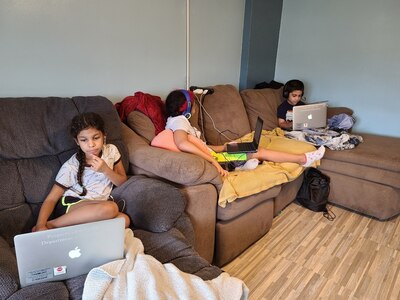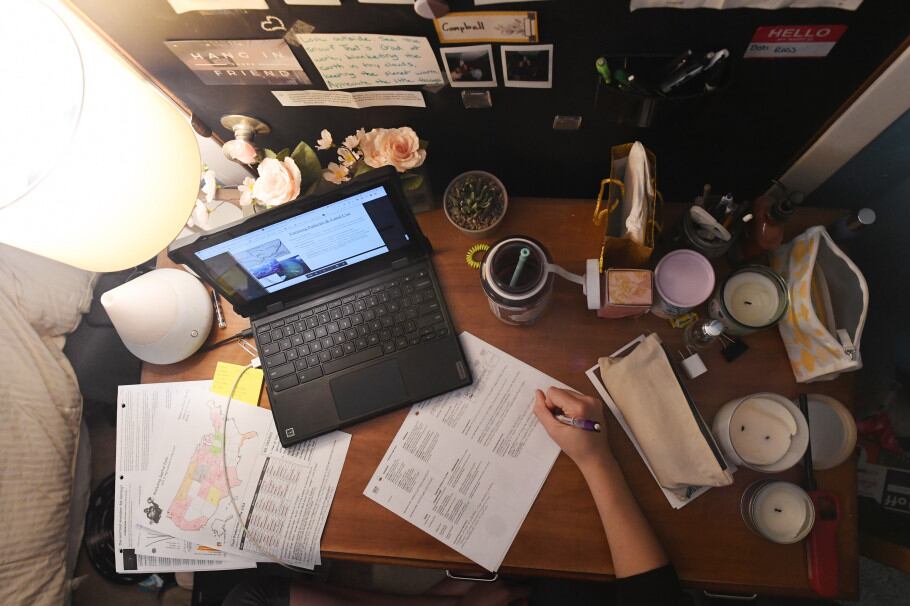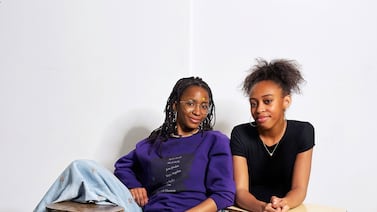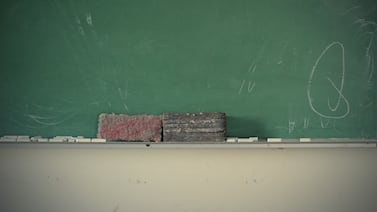Relief. Anxiety. Joy. Outrage.
Parents, students, and educators reacted with mixed emotions after Mayor Bill de Blasio announced that New York City’s district schools will not offer a remote learning option to families this September, resolving a major sticking point in the city’s planning for the fall.
The news came as a shock to many families, as more than 60% of them — or roughly 600,000 students — have opted for fully remote learning this year and the mayor suggested in March that the city would likely have a virtual option.
“I was very surprised to hear there wouldn’t be a full remote option for anybody who really felt like they needed it,” said Jessica Dowshen, a Brooklyn mom of a third grader who attends school in person and a sixth grader who has been remote all year, in part due to a long subway commute to school.
Still, Dowshen is thrilled her children will receive five days a week of in-person instruction and that her sixth-grade son will be able to socialize after more than a year of isolation and Zoom classes full of faceless boxes. “The general consensus from the group of parents I speak with is one of relief and happiness.”
Eliminating virtual schooling this fall may help city officials solve one of the thorniest logistical problems facing schools in the pandemic: the requirement that they run two versions of school at once, forcing schools to stretch staff, reduce live instruction, or even make students learn from a virtual teacher even when they report to a building. The mayor has also repeatedly argued that remote instruction is an inherently inferior substitute to learning in a brick-and-mortar school.
But even as the city’s coronavirus positivity rate — 1.13% — has reached its lowest level since last September, some families are frustrated that they will not be able to make their own decisions about whether it’s safe to return to school buildings. Some parents said they are worried about sending their children back to school buildings before they are eligible for vaccinations, especially as school staff are not currently required to receive shots. (Children under age 12 are not eligible for the shots, though that could change this fall.)
On top of that, the city has yet to offer a detailed explanation of which health and safety measures will be in place this fall, including coronavirus testing protocols for students and staff, whether social distancing rules will allow classrooms to revert to their pre-pandemic sizes, and whether schools or individual classrooms will be shuttered if positive cases crop up. Although officials said masking will still be required, many other elements remain unclear and may need to be adjusted based on changing guidance from public health authorities.
“De Blasio does not make the final say about what’s safe for me and my family,” said Lilah Mejia, a Lower East Side parent whose five school-age children have been fully remote this year. “I am now thinking I need to possibly look at homeschooling options.”
Mejia said she doesn’t trust the education department and worries about overcrowded and poorly ventilated classrooms — issues that predated the pandemic. Despite health experts’ assurances that the shots are safe and effective, Mejia is also reluctant to get her and her eligible children vaccinated.

In general, there is little evidence that New York City’s schools have driven coronavirus outbreaks, though some research also suggests in-person learning contributed to higher infection rates elsewhere. In advance of this year, city officials conducted ventilation checks at every school and have purchased thousands of air purifiers.
City officials announced on Monday that every school will begin holding open houses next month to answer parents’ questions and help make them feel comfortable returning, an acknowledgement that regaining trust from parents like Mejia may be essential. This year, enrollment in the city’s district schools dropped 4%; it’s unclear what effect the mayor’s elimination of remote schooling may have on enrollment patterns next year.
Officials across the nation have taken a range of approaches to the remote question. The governor of New Jersey announced all students must learn in person next year, while Philadelphia will continue offering a remote option. In Washington, D.C. officials plan to offer a limited remote option for families who can demonstrate a need to learn from home. Some of New York City’s biggest charter networks, including Success Academy and KIPP, plan to offer a remote option this fall.
Throughout the pandemic, de Blasio has repeatedly argued that remote instruction is inferior to in-person learning and has shied away from investing significantly in improving virtual instruction. Instead, he has framed his education agenda of the past year as a push to reopen school buildings, even as most students — and a disproportionate share of Black and Asian American students — continued to opt for fully virtual learning.
Some parents and observers said the city’s all-or-nothing approach to remote instruction has downsides and the education department should be more flexible in keeping the parts of it that are working for some students or adapting it to address certain equity issues, such as the lack of universal access to specialized or advanced coursework.
Brooklyn mom Paullette Healy said her 13-year-old son, who has autism and is fully remote this year, benefitted from virtual instruction. “All 12 students are on and engaged during their remote learning lessons” Healy said, noting that she has seen significant jumps in her son’s reading skills.
She has other concerns about the decision to eliminate remote instruction, too, including health and safety and even fears of violence. Healy, who is Asian American, noted some families are also reluctant to return to schools due to racist violence against Asian New Yorkers or concerns about bullying or harassment within schools.
The decision to ditch remote instruction may come as a relief to some principals who said they were nervous about planning to run two versions of school once again and hoped any virtual offering would be operated centrally rather than at the school level.
But Norma Vega, the principal at ELLIS Prep in the Bronx, said the decision to eliminate remote instruction could represent a lost opportunity for her students, who are exclusively new immigrants who are not on track to graduate on time.
She said virtual learning helped students who traditionally juggle jobs with school — some for 40 hours a week — or those who have children of their own at home.
Classes were recorded, so students could catch up on their own time. Teachers and guidance counselors did regular check-ins to keep students on track, and they would create special schedules for students who had other obligations.
“My kids are older so it’s not gonna end in the fall that they need to work, it’s not gonna end that they still need to be parents, it’s not gonna end that they have to support themselves,” Vega said. “I just think it’s a beautiful thing to be able to create more opportunities, more flexibility for our community, for our students.”
Rema Amin contributed





